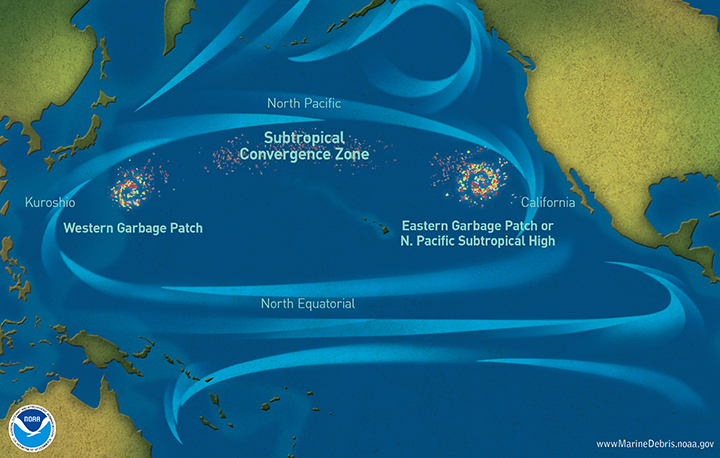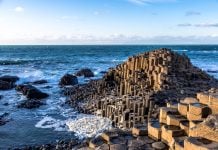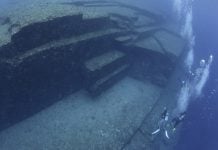It’s not a floating island of trash, like a garbage dump or a landfill. It’s also not the only patch.
They exist all throughout the ocean, and the Pacific Garbage Patch just happens to be the most famous.

Garbage patches are large areas of marine debris concentration that are formed by rotating ocean currents called gyres – kind of like big whirlpools that suck things in.
A garbage patch is made up of tiny plastic pieces called “microplastics” that are less than 5 millimeters long. It’s more like pepper flakes swirling in a soup than something you can skim off the surface.
This video by US Ocean explains precisely what’s an garbage patch and where they are found:
[adthrive-in-post-video-player video-id=”HdrFKvNG” upload-date=”2019-08-08T09:57:48.000Z” name=”What is the Great Pacific Garbage Patch?” description=”What is the Great Pacific Garbage Patch?”]
While everything may be bigger in Texas, some reports about the Great Pacific Garbage Patch say that this marine mass of plastic is twice as big as the Lone Star State, or even twice as big as the continental U.S.
Garbage patches aren’t a solid island of trash or floating landfills in the middle of the ocean, with miles of bobbing plastic bottles and yogurt cups, a bit like in the Citarum river in Indonesia. Nope! Much of the debris found in these areas are small bits of plastic, or microplastics, smaller than 5mm in size that are suspended throughout the water column.
There are many garbage patches. The trash congregates to various degrees in numerous parts of the Pacific and the rest of the ocean. These natural gathering points appear where rotating currents, winds, and other ocean features converge to accumulate marine debris, as well as plankton, seaweed, and other sea life.

Unfortunately, cleaning up the garbage patches is complicated since the debris making them up is not only constantly mixing and moving, but also extremely small in size.
In the next video, NASA’s Scientific Visualization Studio created a visualization of the ocean garbage patches using data from floating, scientific buoys that NOAA has been distributing in the oceans for the last 35-years:
[adthrive-in-post-video-player video-id=”Y6uQOGW2″ upload-date=”2019-08-08T10:11:18.000Z” name=”NASA’s Garbage Patch Visualization Experiment” description=”A visuaisation showing how the Great Garbage Patch for in Oceans”]
Imagine you are relaxing at your preferate California beach. You watch the open ocean trying to spot sea animals, dolphins or whales… All of a sudden you believe you see one. But actually it is just a huge mountain of trash.













[…] to Plastic Pollution in our Oceans” by NRDC “The Ocean Claenup” “Great Pacific Garbage Patch: The Floating Garbage Island Is Visible From California CoastR… by Strange Sounds “Microplastics in Oceans” “Here’s How Much Plastic Ends Up In […]
[…] to Plastic Pollution in our Oceans” by NRDC “The Ocean Claenup” “Great Pacific Garbage Patch: The Floating Garbage Island Is Visible From California CoastR… by Strange Sounds “Microplastics in Oceans” “Here’s How Much Plastic Ends Up In […]
[…] are in the Indian Ocean, the north and south of the Pacific, and north and south Atlantic […]
[…] Could this diminish the size of the great garbage patch? […]
[…] in our seas worldwide, question the amount of plastic released into the ocean and explain the great pacific garbage patch – from which all this plastic is coming […]